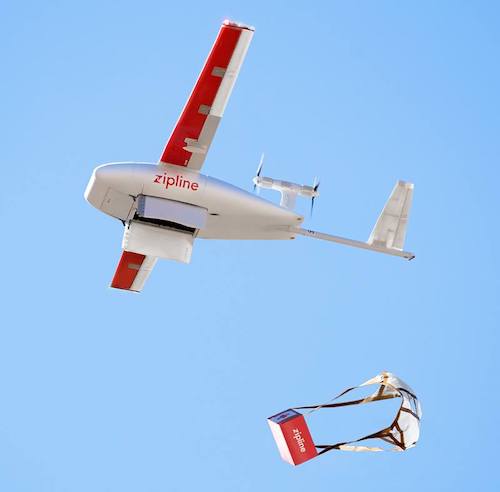
October 6, 2022 – Zipline, the global leader in instant logistics and delivery, announced it is beginning deliveries of prescriptions and medical products directly to select Intermountain Healthcare patients’ yards in the Salt Lake Valley area, and that interested customers can sign up to use the service and place orders.
Zipline’s Utah delivery system will expand gradually over five years and will eventually be capable of delivering directly to more than 1 million people. With this new partnership, the companies are making healthcare more accessible, convenient, and better for the environment.
Zipline will begin to operate its service in the Salt Lake and Utah counties. Zipline will evaluate whether the companies can deliver to someone’s home based on several factors, including their yard size, location, and surrounding airspace, and will get in touch with eligible customers who are interested in using the Zipline system.
To start, the companies will service local communities within a few miles of the Zipline distribution center. Over time, they will gradually add new distribution centers, households, and community drop-off locations.
Intermountain Healthcare is the first health system west of the Mississippi River to use Zipline to bring prescriptions and over-the-counter medications to patients’ homes via Zipline’s on-demand logistics system, which includes fully electric, autonomous aircrafts.
This enables Intermountain to provide people-first care to its patients, in-person or virtually, and ensures patients can receive support in a convenient and accessible way, which is particularly impactful if they are less mobile, sick, or have work obligations that make it harder to visit a hospital or pharmacy to get medications.
Zipline’s on-demand logistics and delivery system features a fleet of small, fixed-wing, fully autonomous aircraft that operates quietly and releases packages with parachutes to a patient’s yard, in an area about the size of a couple parking spaces. Zipline’s aircrafts can fly up to a 50-mile radius in most weather conditions, including rain, wind, and extreme temperatures, and are known for minimal sound.
Each flight produces about 30 times less CO2 emissions per mile than an average electric vehicle and up to 98% less CO2 emissions than a combustion engine vehicle, according to company estimates. These environmental benefits are particularly important along Utah’s Wasatch Front, where air quality has been a major issue.
Test flights in Utah began several weeks ago. This partnership will expand gradually over five years and eventually be capable of delivering to approximately 90% of patient homes in the Salt Lake Valley area. Over time, the companies will expand beyond the Salt Lake Valley area to serve other communities in Utah so that patients can access the care they need, regardless of where they live.
